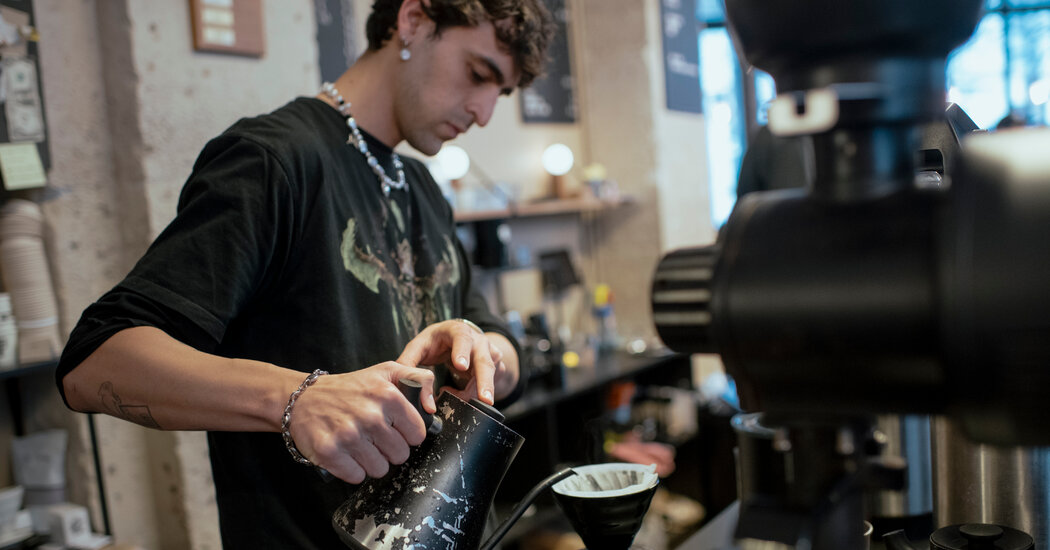It’s a Parisian scene as iconic as the Eiffel Tower: the sidewalk cafe, where outside, rattan bistro chairs and tables invite passers-by to linger and engage in people-watching, and inside, strangers mill about the bar and exchange small talk over astringent espressos and glasses of wine.
But over the last 15 years, a distinctly Anglophone, caffeinated import has been putting the squeeze on Paris’s cafes and bistros: the specialty coffee shop. With their carefully curated aesthetic, artisanal fare and rapid growth, coffee shops, some say, have increasingly poached the attention, time and euros of Parisians as well as the millions of international travelers who visit the French capital every year.
Since the early 2010s, when the first wave of niche coffee shops opened in France, their number has risen 74 percent across the country to 3,500, with a new coffeehouse now opening every week, according to Collectif Café, a trade association.
“Do coffee shops pose a danger to us? The answer is yes,” said Alain Fontaine, the owner of Le Mesturet bistro in the Second Arrondissement who petitioned the French government for six years to protect cafes and bistros with a special cultural-heritage status. They received it in September. “In the long run, it could shut down businesses like ours,” he said.
Parisian cafes and bistros have faced competition before, in the form of fast-food and coffee chains (notably Starbucks), at-home coffee machines (notably Nespresso), food delivery services, declining alcohol consumption, remote work and changing consumer habits.
In the 1960s, France counted about 200,000 bistros and cafes across the country. (The distinction between cafes and bistros has blurred over time; both serve food and drink.) Today, that number has fallen to about 40,000, Mr. Fontaine said.
The post-pandemic years witnessed much of the growth of the specialty coffee shop, with some new establishments offering takeout only, while others are laptop-friendly. Many are similar in design — small and minimalist, often with a Scandinavian aesthetic. Some also sell flowers or vintage goods, or draw inspiration from Asian ingredients.
Much of their early success can be attributed to a growing sense among connoisseurs that the inky and bitter espressos served at Paris cafes can taste shockingly bad.
Every morning before work, Eve Bantman, 49, a researcher at a Paris think tank, pops into her local cafe and slides up to the zinc bar, where she banters with the…
Click Here to Read the Full Original Article at NYT > Travel…
